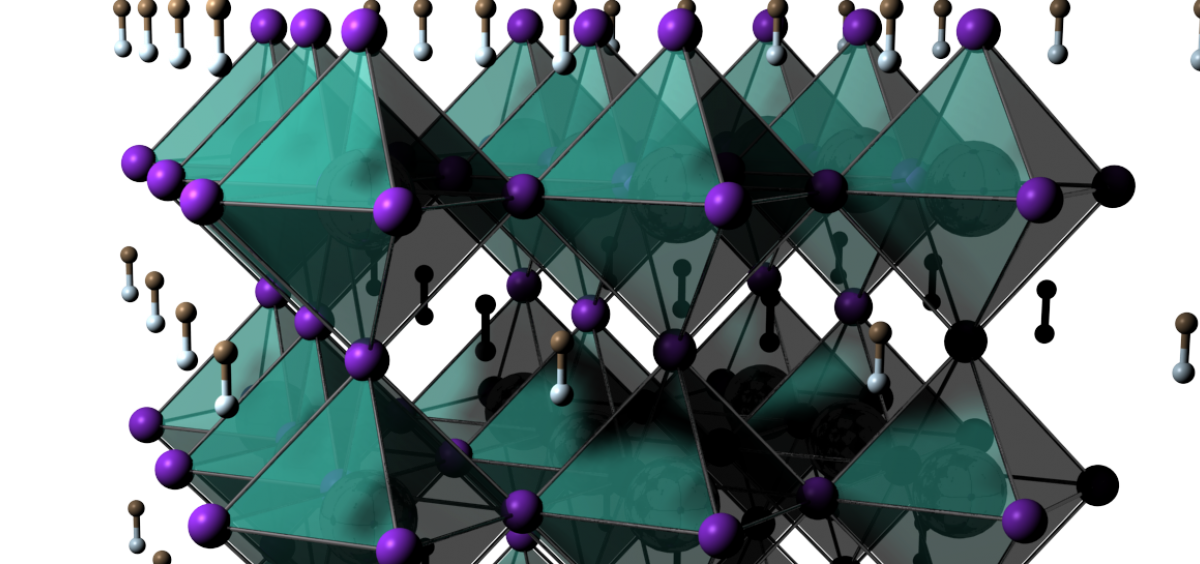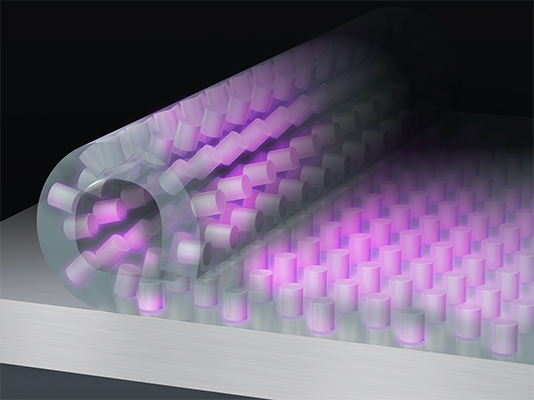(Oregon State researchers make key advance for printing circuitry on wearable fabrics)
2020/11/12 アメリカ合衆国・オレゴン州立大学 (OSU)

・ OSU とラトガーズ大学が、インクジェットプリント後に高密度なペロブスカイト構造(Cs2SnI6)のフィルムに転換する、二元金属ヨウ化物塩をベースとしたインクを開発し、負特性(NTC)サーミスタを直接布地にプリント製造することに成功。
・ 高精度、低温度で布地に電子回路を直接プリントしたウェアラブルな電子テキスタイルの製造が可能に。これまで課題となっていた、性能と製造コストのトレードオフを解決する技術として期待できる。
・ 従来の電子テキスタイルの製造プロセスでは、センサー、ディスプレイ、電源や論理回路等のデバイスを配置した硬い基板を多孔質で不均一な表面の布地に統合するため、布地の柔軟性や耐久性の制限や、布地の製造プロセスの変更を要する場合もある。高コストで熱やエネルギーを大量消費し、スケールアップが困難なことが課題であった。
・ ペロブスカイトは、1839 年にウラル山脈でドイツの鉱物学者が発見し、ロシアの科学者である Lev Perovski にちなんで命名されたカルシウムとチタンの酸化物の結晶構造。2009 年には日本の科学者が光の吸収能力を有するペロブスカイト構造を発見している。金属とハロゲンをベースとしたペロブスカイト結晶構造を有する材料は、電子回路に不可欠な半導体の役割を担う。
・ 同インクを使用し、負特性(NTC)サーミスタをポリエステルの織物に 120℃の低温度で直接プリントした。サーミスタは、温度が上がると電気抵抗が下がるレジスタ(電子回路に流入する電流量を制御)。標準的なレジスタでの熱による電気抵抗の変化は好ましくないが、温度検出回路では効果的となる。
・ NTC サーミスタは、温度が関与するあらゆる種類の機器での使用が可能。僅かな温度変化でも電気抵抗が大きく変化するため、正確な温度の計測と制御に最適と考える。
・ 本研究は、Walmart Manufacturing Innovation Foundation と米国立科学財団(NSF)が支援した。
URL: https://phys.org/news/2020-11-key-advance-circuitry-wearable-fabrics.html
<NEDO海外技術情報より>
(関連情報)
Adavanced Functional Materials 掲載論文(アブストラクトのみ:全文は有料))
Inkjet Printing of Perovskites for Breaking Performance?Temperature Tradeoffs in Fabric‐Based
Thermistors
URL: https://onlinelibrary.wiley.com/doi/10.1002/adfm.202006273
Abstract
A novel low‐temperature route is developed for inkjet printing of the perovskite Cs2SnI6, to create wearable negative‐temperature‐coefficient thermistors with unprecedented performance on thermally sensitive fabrics. A low processing temperature of 120 °C is achieved by creating a stable and printable ink using binary metal iodide salts, which is thermally transformed into dense Cs2SnI6 crystals after printing. The optimally printed Cs2SnI6 shows a temperature measurement range up to 120 °C, high sensitivity (4400 K), and temperature coefficient of resistivity (0.05 °C−1), and stability under ambient environmental conditions and bending. The approach breaks a critical tradeoff that has hindered wearable fabric‐based thermistors by enabling damage‐free fabrication of devices with commercially comparable performance, evincing significant applications in multifunctional textiles and beyond.



